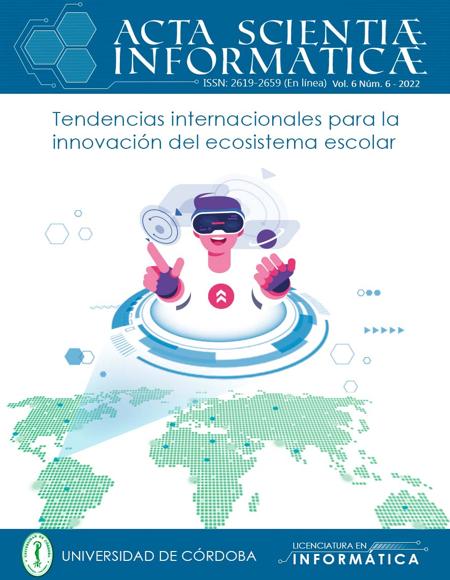Español
Ambiente virtual de aprendizaje para desarrollar el pensamiento matemático en la ejecución de las operaciones aritméticas básicas.
Show authors biography
A virtual learning environment (VLE) is an online space that allows interaction between teachers and students and enables the exchange of knowledge, resources and materials that facilitate a better understanding of some subject, on the other hand, mathematical thinking is the ability to think and develop activities in numerical terms, thus generating the capacity for logical reasoning. The objective was to design an AVA for the teaching-learning of basic arithmetic operations and also to evaluate its process. The methodology was qualitative with an action-research approach, which was carried out in 4 phases. As main results, an advance was obtained in the development of mathematical thinking and an improvement in the academic performance of the students. In conclusion, it can be stated that the implementation of a virtual learning environment has a positive impact on the way of learning mathematics, influencing an autonomous education, where the student is responsible for acquiring their own knowledge.
Article visits 186 | PDF visits
Downloads
- Cabañas, V & Ojeda, F. (2007). Aulas virtuales como herramienta de apoyo en la educación de la Universidad Nacional mayor de San Marcos. SISBIB “Sistema De Bibliotecas”: http://cybertesis.unmsm.edu.pe/handle/20.500.12672/2534
- Muñoz, I. (2015). Estrategias didácticas con incorporación de tecnologías de la información y la comunicación para el desarrollo de competencias integrales en estudiantes de educación superior a distancia. Tesis inédita de Maestría. Tecnológico de Monterrey y Universidad Autónoma de Bucaramanga.
- Valenzuela, J. y Flores, F. (2012). Fundamentos de Investigación Educativa. Vol. 2 y 3. Editorial Digital, Tecnológico de Monterrey. México.
- Humphrey, A., & Lie, B. (2004). Análisis de matriz DOFA: https://www.academia.edu/download/33337001/Analisis_de_matriz_DOFA_Actualizado.pdf
- Vargas, N. A. (2019). Aprendizaje basado en proyectos mediados por tic para superar dificultades en el aprendizaje de operaciones básicas matemáticas (Doctoral dissertation, Universidad Pedagógica y Tecnológica de Colombia): https://repositorio.uptc.edu.co/handle/001/3211
- Guerrero Machuca, J. D., & Jiménez León, L. M. (2016). Ambiente virtual learning management system (lms) como apoyo al aprendizaje de las matemáticas en estudiantes del grado noveno de la institución educativa Enrique quintero Jaimes: http://repository.libertadores.edu.co/handle/11371/616
- Zuleta Peña, L. A. (2020). Ambiente virtual de aprendizaje para mejorar el rendimiento académico en la especialidad sistemas de la IE Ciudad Córdoba. http://repository.libertadores.edu.co/handle/


